Questões de Língua Inglesa do ano 2009
Lista completa de Questões de Língua Inglesa do ano 2009 para resolução totalmente grátis. Selecione os assuntos no filtro de questões e comece a resolver exercícios.
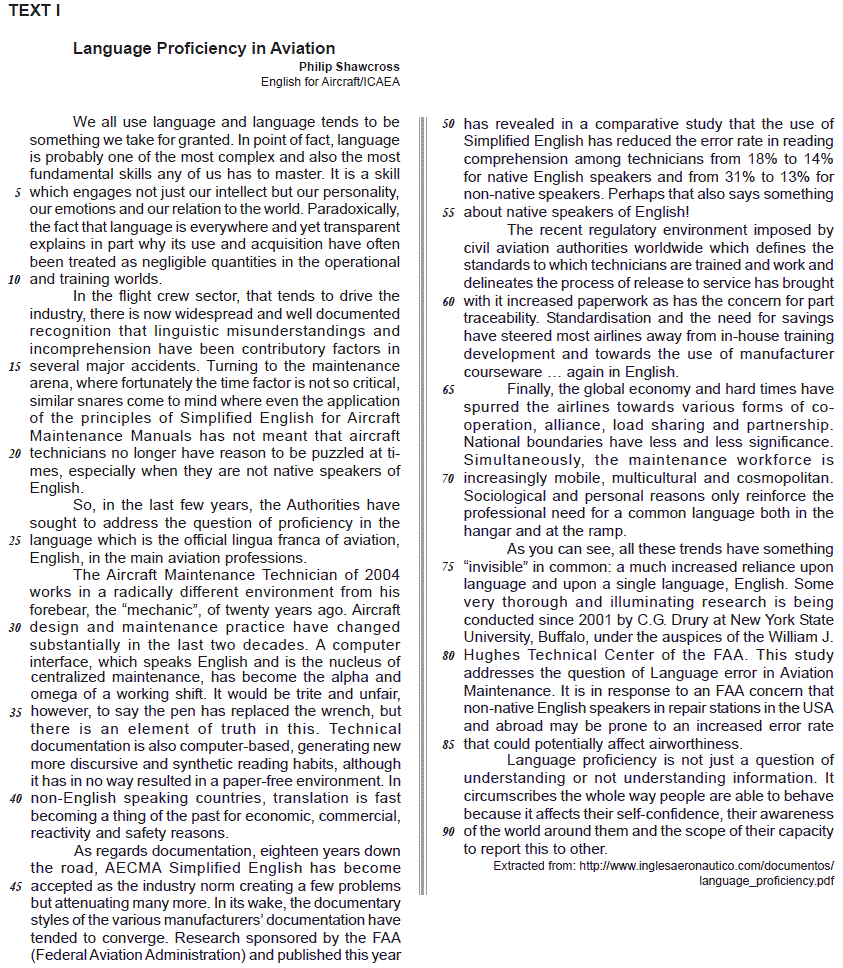
The sentence Perhaps that also says something about native speakers of English! (lines 54-55) implies that
- A.
the error rate in reading comprehension is a relevant issue among native English speakers and among non-native ones.
- B.
non-native English flight personnel are equally liable to work-related reading comprehension flaws as the native staff.
- C.
native English speakers reading comprehension error rate is found to be less than one-fifth that of non-native English speakers.
- D.
Simplified English used in documentation is mandatory for non-native English speakers to appropriately function in the work environment.
- E.
native speakers of English have had substantial difficulty speaking to non-native speakers in the aircraft maintenance work environment.
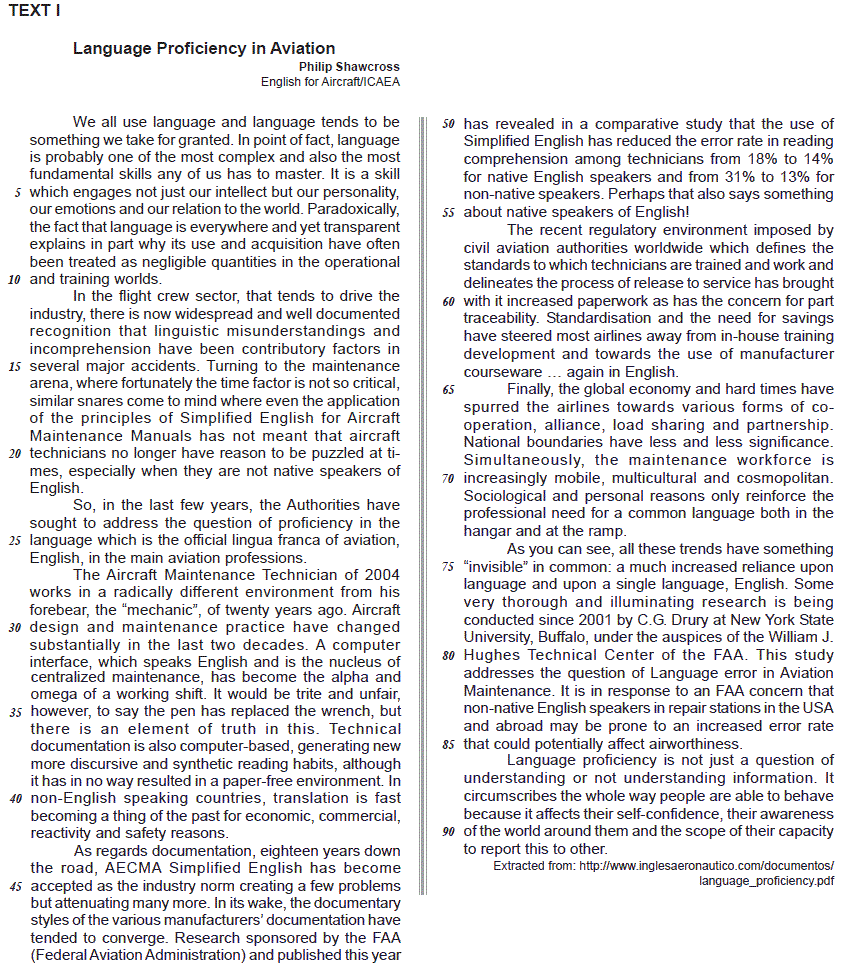
- A.
similar snares come to mind... (line 17) means that other equivalent solutions are engendered.
- B.
... the alpha and omega of a working shift. (lines 33- 34) can be understood as the positive and negative feature of a working shift.
- C.
... the pen has replaced the wrench, (line 35) can be interpreted as understanding the documents have become more important than being able to use hardware tools.
- D.
eighteen years down the road, (lines 43-44) means that eighteen years after piloting airplanes.
- E.
... both in the hangar and at the ramp. (lines 72-73) can be interpreted as in the backstage and all hidden areas of professional training.
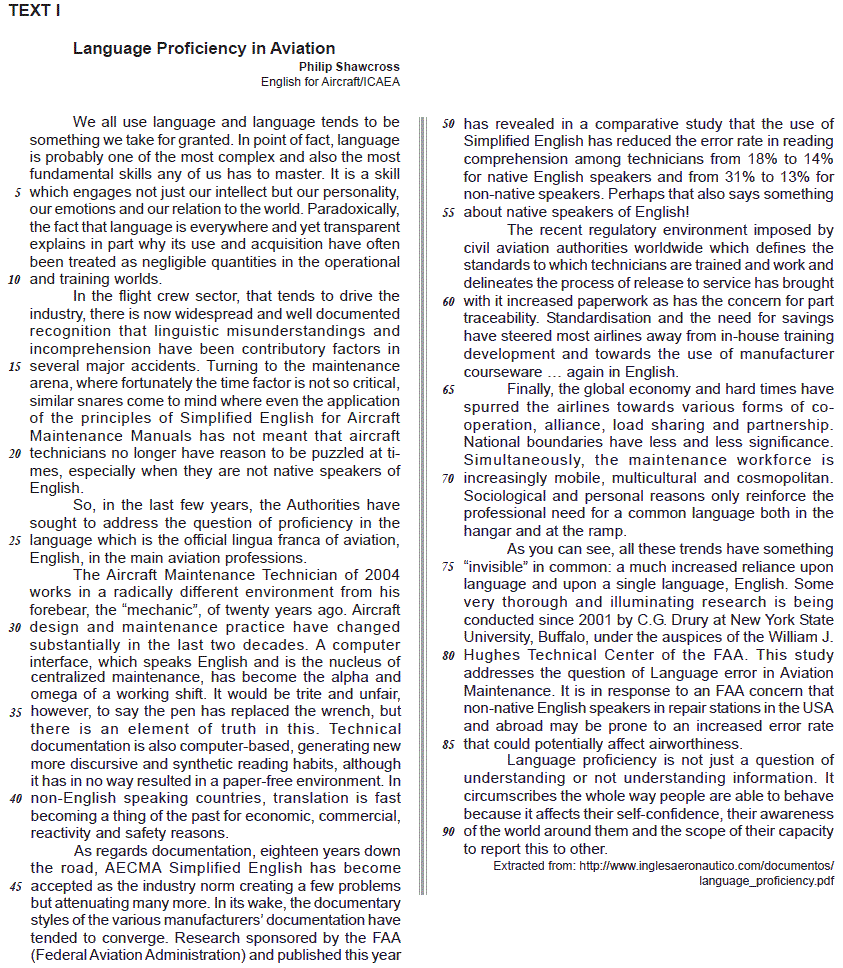
The expression all these trends in line 74 refers to
- A.
The recent regulatory environment (line 56) and the global economy and hard times (line 65)
- B.
forms of co-operation, alliance, load sharing and partnership (lines 66-67)
- C.
Sociological and personal reasons (line 71)
- D.
the professional need for a common language both in the hangar and at the ramp. (lines 71-73)
- E. much increased reliance upon language and upon a single language, English (lines 75-76)
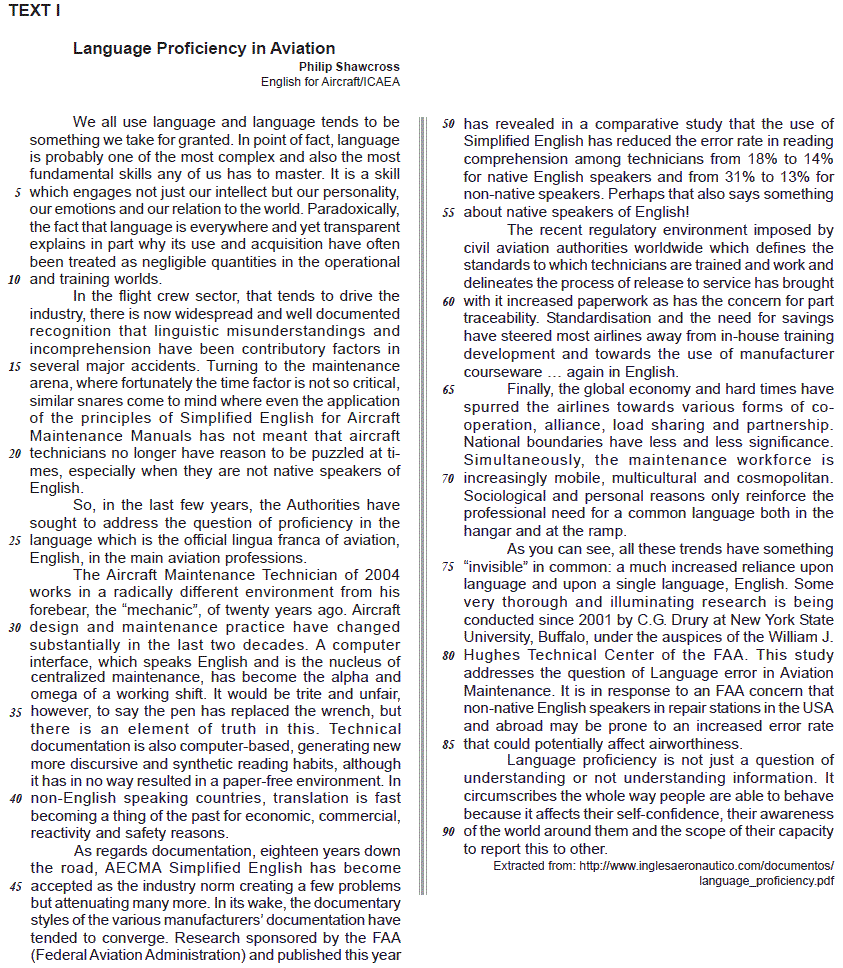
The author, Philip Shawcross, concludes that language proficiency, irrespective of the work environment, is important since
- A.
it allows technical and flight personnel to withhold information and eliminate errors that affect the work environment.
- B.
it is the means through which we share information and understand the context we live in.
- C.
it affects the way people establish rapport with their fellow staff members in the airline industry.
- D.
professionals rely on language to operate in the aviation industry as national boundaries are fading.
- E. we need to understand technical information we normally take for granted.

Choose the option that appropriately completes the passage in Text II.
- A.
whos - will be - if - no - thus - in
- B.
whose - can be - when - all - so - for
- C.
whose - may be - whether - any - so - to
- D.
where - may be - if - all - thus - on
- E.
when - will be - that - any - thereby - at
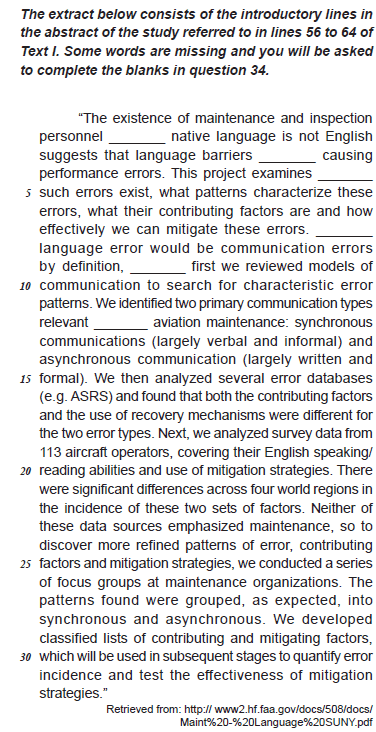
The alternative that does NOT correctly describe a linguistic characteristic found in the Abstract reproduced in Text II is
- A.
use of an existential sentence structure.
- B.
coordination of nominal clauses in object position.
- C.
discourse markers that indicate sequencing.
- D.
a verb of perception followed by a bare infinitive.
- E.
a sentence with two passive constructions.
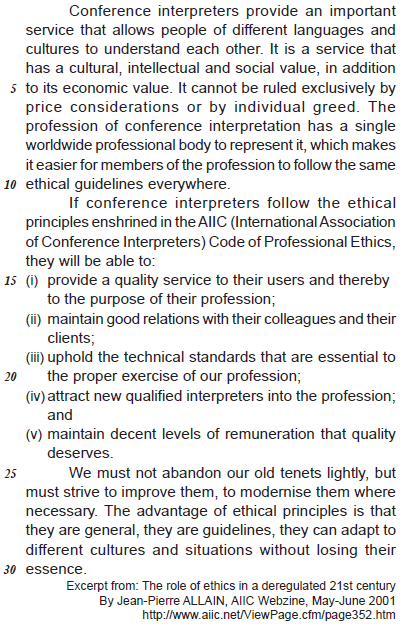
The following principles have been extracted from the official AIIC Code of Ethics.
I - Members of the Association shall not accept any assignment for which they are not qualified.
II - It shall be the duty of members of the Association to afford their colleagues moral assistance and collegiality.
III - Members of the Association shall not accept any job or situation which might detract from the dignity of the profession.
IV - Members of the Association shall be bound by the strictest secrecy, which must be observed towards all persons and with regard to all information disclosed in the course of the practice of the profession at any gathering not open to the public.
V - Members of the Association shall endeavor always to secure satisfactory conditions of sound, visibility and comfort.
The principles listed above which are, literally or implicitly, referred to in Text III are, ONLY
- A.
I and II.
- B.
I and IV.
- C.
I, II and IV.
- D.
II, III and IV.
- E.
I, II, III and V.
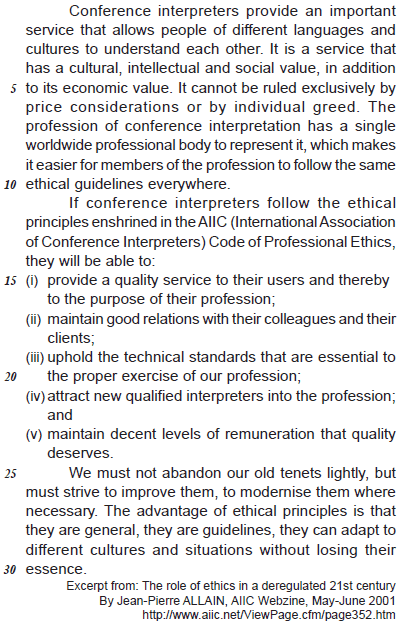
Each alternative below contains a suggestion for the translation of one of the ethical principles listed in lines 15 to 24 of Text III. Indicate which alternative expresses an appropriate translation, in terms of syntax, semantics and style.
- A.
(i) Providenciar um serviço qualitativo aos usuários deles e lá, então, aos propósitos da sua profissão.(lines 15-16)
- B.
(ii) Manter bons relacionamentos com seus colégios e com os clientes deles. (lines 17-18)
- C.
(iii) Segurar os estandartes técnicos que foram essenciais ao próprio exercício de nossa profissão.(lines 19-20)
- D.
(iv) Atrair novos qualificados intérpretes para dentro da profissão.(line 21)
- E.
(v) Garantir níveis dignos de remuneração que fazem jus à qualidade dos serviços.(lines 23-24)
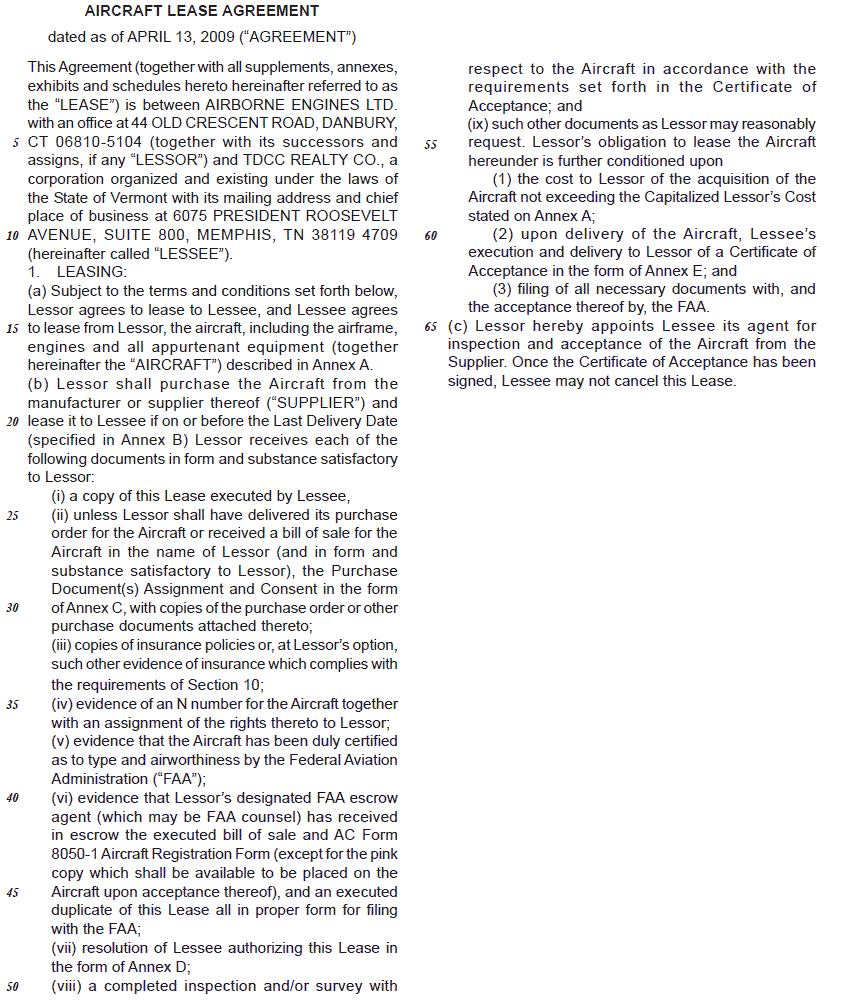
In clause 1(a), the excerpt the aircraft, including the airframe, engines and all appurtenant equipment (together hereinafter the AIRCRAFT) (lines 15-17) is correctly translated as:
- A.
o avião, inclusive a estrutura, os motores e todos os equipamentos pertinentes (juntos a partir de agora o AVIÃO).
- B.
o avião, incluindo a aeronave, os motores e todos os equipamentos pertencentes (juntamente doravante o AVIÃO).
- C.
o avião, incluindo a armação, os motores e todos os equipamentos suplementares (em conjunto, de agora em diante, o AVIÃO).
- D.
a aeronave, inclusive a estrutura, os motores e todos os equipamentos acessórios (em conjunto, doravante, a AERONAVE).
- E.
a aeronave, que inclui a armação, os motores e todos os equipamentos adjuntos (juntos desde então a AERONAVE).
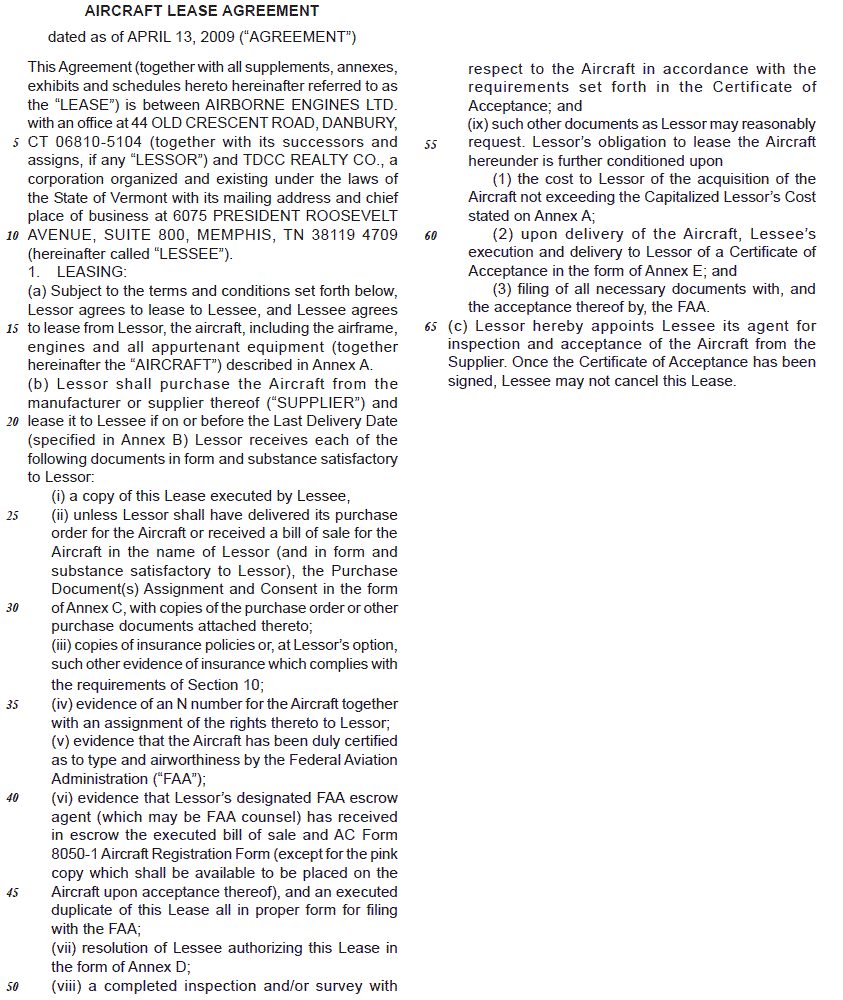
In clause 1(b)(ii), the expression ...Purchase Document(s) Assignment and Consent... (lines 28-29) is appropriately translated as:
- A.
Tarefa e Acordo de Compra de Documento(s).
- B.
Cessão e Consentimento de Documento(s) de Compra.
- C.
Compra de Documentos, Aquiescência e Consentimento.
- D.
Transferência de Documentos de Compra e Consentimento.
- E.
Transferência de Documentos de Aquisição e Consentimento.


